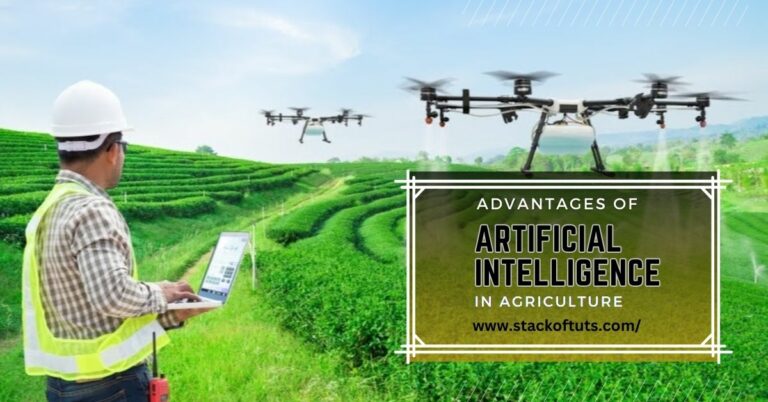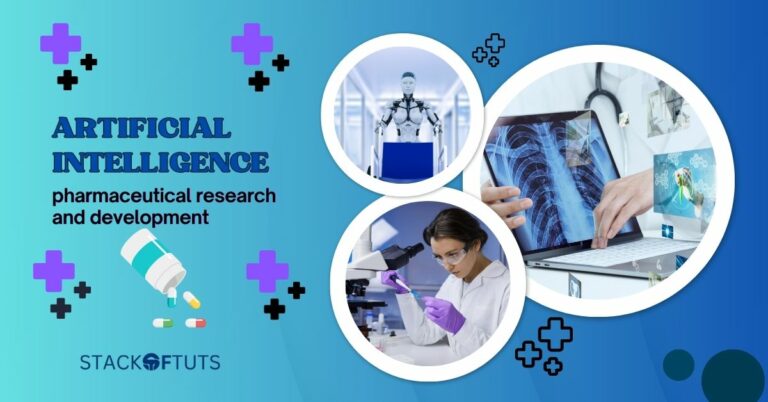
In the modern era, agriculture has significantly evolved, integrating advanced technologies to address critical challenges. Central to this transformation is the incorporation of Artificial Intelligence (AI). The amalgamation of AI and agriculture has not only revolutionized farming practices but has also ushered in an era of precision and sustainability. Here, we delve deep into the 12 Best Applications of AI in the field of Agriculture that are transforming the field.
For a complete guide also read about Artificial intelligence used in Agriculture dive into this link for exclusive insights and captivating discoveries!
How AI is making farming more Sustainable?

AI helps agriculture become more sustainable in several ways. AI-powered precision agriculture may help farmers use less fertilizers and pesticides, which can harm the environment. AI may also create pest-, disease-, and drought-resistant agricultural variants. This may help farmers grow crops more effectively and decrease chemical inputs.
AI is also improving food waste reduction methods. AI-powered systems can follow food goods along the supply chain and detect waste. This information may be used to design food waste reduction initiatives.
Top 12 Applications of AI in the Field of Agriculture
1. Precision Farming

Precision farming stands at the intersection of technology and agriculture. Through AI-driven tools, farmers can now make informed decisions on planting, fertilization, and harvesting. Advanced algorithms analyze soil data, weather conditions, and crop health to provide actionable insights, enabling farmers to maximize yields while conserving resources.
2. Crop Disease Detection

AI-powered imaging tools have become indispensable in detecting and diagnosing crop diseases at an early stage. By analyzing patterns and colors on plant leaves, these tools provide timely alerts, ensuring timely interventions and safeguarding harvests from potential losses.
3. Automated Irrigation Systems

Water conservation is paramount in today’s agriculture. AI-driven irrigation systems can determine the exact amount of water required for specific crops, optimizing usage. These systems utilize data from soil moisture sensors and local weather predictions, ensuring that plants receive just the right amount of hydration.
4. Yield Prediction and Optimization

Predicting yields is no longer a game of estimates. With the power of AI, farmers can receive precise predictions about their harvests. By analyzing historical data, current weather patterns, and soil conditions, AI models provide farmers with a clear picture of the expected yield, allowing for better market planning.
5. Drone Technology for Field Analysis

Drones equipped with AI capabilities offer a bird’s eye view of vast farmlands. Through high-resolution imagery, these drones can assess crop health, soil quality, and pest activities. The insights gleaned enable farmers to take proactive measures, ensuring optimal crop growth and protection.
6. Robotic Harvesting

Human labor has always been a significant component of agriculture. However, with the advent of AI-powered robots, many harvesting processes are being automated. These robots are designed to pick fruits and vegetables without causing damage, ensuring the produce remains fresh and intact.
7. Livestock Monitoring

With wearable devices and cameras, the health, movement, and behavior of livestock can be continuously monitored. Any anomalies or health issues are instantly detected, allowing for immediate care and intervention.
8. Soil Health Analysis

The health of the soil directly impacts the quality of the harvest. AI-powered sensors and tools can analyze soil pH, moisture, and nutrient balance. These findings help farmers choose fertilizers and crop rotations.
9. Climate Forecasting and Adaptation

Climate change poses significant challenges to agriculture. With AI’s predictive capabilities, farmers can receive accurate weather forecasts, helping them adapt their farming strategies accordingly. Whether it’s choosing drought-resistant crops or altering planting schedules, AI provides the necessary guidance.
10. Supply Chain Optimization

Once the produce is ready for the market, AI steps in to optimize the supply chain. By analyzing demand patterns, transportation logistics, and market prices, AI ensures that farmers get the best value for their produce, reducing wastage and increasing profitability.
11. Seed Selection and Breeding

Choosing the right seeds can make or break a harvest. AI-driven databases analyze the genetic information of seeds, helping farmers select varieties that are best suited to their specific climatic and soil conditions.
12. Post-Harvest Quality Control

Once crops are harvested, maintaining their quality is paramount. AI systems can inspect the products for defects, sort them based on quality, and even predict their shelf life, ensuring that only the best products reach the market.
How to get started with AI in agriculture?

There are several sites for farmers and agricultural producers interested in AI. Several firms provide AI-powered agricultural solutions, while several government and non-profit organizations give knowledge and assistance on AI in agriculture.
Here are a few suggestions for implementing AI in agriculture:
- Identify your specific needs: Your agricultural operation’s greatest challenges? AI might help you develop in what ways?
- Do your research: There are several AI-powered agriculture solutions, so compare them to discover the perfect one.
- Start small: Implementing AI in farming requires starting small. This will help you understand the technology and spot issues.
- Get help: There are several resources to assist farmers in using AI. Ask your local agricultural extension office or an AI-powered agricultural solutions provider for help.
FAQs
The three most popular Applications of AI in the field of Agriculture are precision farming for tailored crop care, drone-based crop monitoring, and early disease detection using image recognition.
Many countries, including the USA, China, and India, are integrating AI into farming practices. These technologies optimize yields, detect diseases, and improve overall agricultural efficiency.
AI in smart agriculture enhances precision farming by analyzing data for optimal planting and harvesting. It aids in early disease detection and automates tasks, ensuring higher yields and efficient resource use.
AI in irrigation involves using sensors and machine learning algorithms to monitor soil moisture levels, allowing for automated, real-time adjustments to conserve water and ensure optimal crop growth.
Conclusion
In conclusion, the Application of AI in the field of Agriculture and its symbiotic connection are obvious. As climate change, population growth, and resource limits threaten agriculture, AI offers new and sustainable solutions. Every day, the necessity of incorporating AI into agricultural methods grows, setting the way for smarter, more efficient, and sustainable agriculture.
Thanks!





